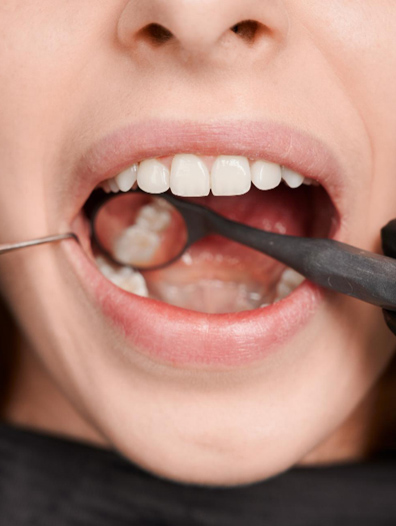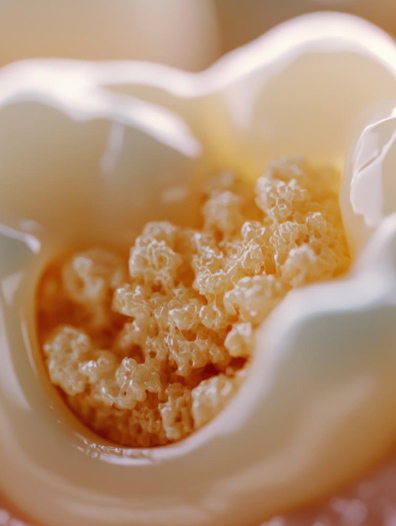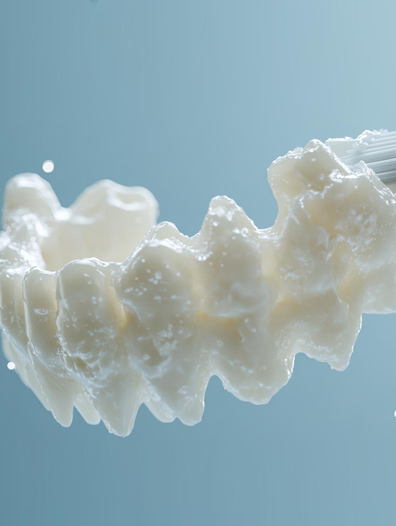White Fillings

A Natural Look with Modern, Mercury-Free Restorations
At Quality Dental Care, we are proud to be an amalgam-free practice. This means that all dental restorations we place are free from materials like mercury and silver—and instead use white, tooth-coloured materials that blend seamlessly with your natural teeth.
Modern white fillings are durable, versatile, and aesthetically pleasing. They allow us to restore decayed or damaged teeth without compromising the appearance of your smile.
Whether you’re having a new cavity filled or replacing an old silver filling, we’re here to provide you with safe, effective, and attractive results.
White Filling Process
Getting a white filling is a simple and comfortable process:
- Assessment and diagnosis – We’ll identify the extent of the decay or damage using visual examination and diagnostic tools.
- Preparation – The affected part of the tooth is gently cleaned and prepared.
- Placement – We apply the white filling material (composite resin or GIC) and shape it to match your natural tooth.
- Finishing and polishing – Once set, the restoration is polished for a smooth finish and natural feel.
We ensure your filling feels comfortable and fits well with your bite.
Two Types of White Fillings
Composite Resin
Ideal for small to medium-sized cavities, composite resin is a strong, tooth-coloured material that provides excellent aesthetic and functional results.
- Composite resin is made from a mix of plastic and fine glass particles.
- It is bonded directly to the tooth surface, providing a secure and long-lasting seal.
- Once placed, the material is set using a special light and shaped to match your natural contours.
- In the right conditions, it can serve as a conservative long-term solution for repairing cavities, chips, and minor fractures.
Composite resin is often used in highly visible areas, such as the front teeth, because of its ability to blend perfectly with your smile.


Glass Ionomer Cement (GIC)
GIC is a fluoride-releasing white filling material that is typically used in specific clinical situations:
- GIC is weaker than composite resin, making it more suitable for non-load bearing areas or temporary restorations.
- Its fluoride-releasing properties help strengthen the surrounding tooth and reduce the risk of future decay.
- It can be an excellent choice for young children, or for fillings placed near the gumline where moisture control is more difficult.
In some cases, GIC may be used as a base layer under a composite resin to combine strength with added protection.


Replacing Old Metal Fillings
If you’re looking to upgrade your smile by removing old amalgam fillings, we can safely replace them with modern white restorations. This can improve not only the aesthetics of your teeth but also provide peace of mind for those who prefer mercury-free alternatives.
Your Smile, Restored the Right Way
We take pride in using minimally invasive techniques and materials that are both functional and beautiful. Our white fillings are carefully selected to suit your dental needs while preserving as much natural tooth as possible.
Whether you’re addressing new decay or refreshing outdated dental work, we’ll guide you through every step of your restoration with care and precision.
Why Choose White Fillings?
Traditional amalgam fillings, while effective, are dark in colour and can stand out against your natural tooth structure. White fillings, on the other hand, are designed to match the exact shade of your tooth, making them virtually invisible when you smile or speak.
In addition to their natural look, white fillings also offer:
- Mercury-free material – safer for you and the environment
- Aesthetic appeal – no more dark spots on your teeth
- Conservative treatment – preserves more of your natural tooth structure
- Strong bonding – forms a tight seal with the tooth, reducing the risk of leakage or further decay
Frequently Asked Questions
Composite resin fillings have advanced significantly in recent years and now offer excellent durability—especially for small to medium-sized cavities. In back teeth with larger cavities, other restorative options may be recommended for added strength.
White fillings are resistant to staining, but like natural teeth, they can be affected by habits like smoking or excessive consumption of coffee or red wine. Good oral hygiene and regular check-ups help keep them looking their best.
No. The procedure is usually pain-free. Local anaesthetic is used to ensure you remain completely comfortable during the filling process.
Yes—composite fillings harden immediately under a curing light, so you can resume eating and drinking right after your appointment. However, it’s best to avoid very hard or sticky foods for the first 24 hours.
With good oral hygiene and regular dental check-ups, white fillings can last many years. The longevity depends on the size of the filling, the location, and your eating and oral hygiene habits.
If your metal fillings are still intact and not causing issues, replacement is not always necessary. However, if aesthetics or concerns about mercury are important to you, we can discuss safe and appropriate replacement options.
Ready to enhance your smile?
Book your consultation today and begin your journey toward a brighter, more confident smile.
Services
- Initial Examination
- Preventive Services
- White Fillings
- Tooth Extraction
- Childrens Dentistry
- Emergency Dental Care
- Cosmetics Services
- Teeth Whitening
- Veneers
- Restorative Services
- Porcelain CEREC Restorations
- Root Canal Treatment
- Dental Crowns
- Dental Bridge
- Dental Implant
- Dentures
- Damaged / Infected Tooth Services
- Tooth Replacement Services
